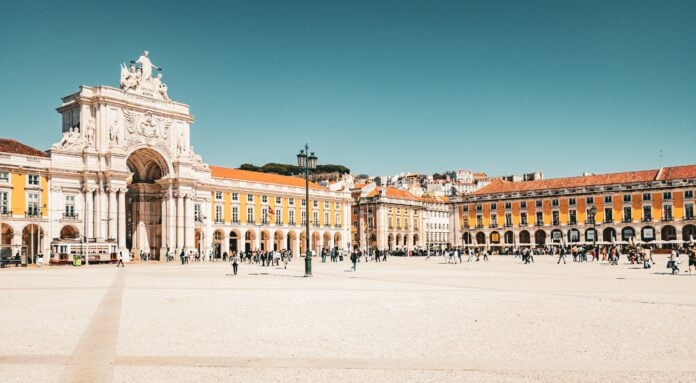Known as Praça do Comércio, Commerce Square in Lisbon is a grand square, one of the largest in Europe, spanning approximately 36,000 square meters. Encircled by 79 arches, this expansive square stands as an architectural treasure, and features stores and restaurants. It is a meeting point for events, protests, and more, one that represents the capital’s history.
History
Commerce Square in Lisbon represents the essence of Portugal’s capital and its history. In 1511, King D. Manuel I made a pivotal move, transferring his residence from the São Jorge Castle to this site adjacent to the river.
However, later on, what was known as the Paço da Ribeira, along with its remarkable library housing 70,000 volumes, was destroyed in the 1755 earthquake. Under the guidance of Eugénio dos Santos, the reconstruction phase became pivotal, with the square evolving into a fundamental element of the Marquês de Pombal’s master plan.
The buildings encircling the square served various ministries and public institutions for many decades. Today, their purpose has diversified, encompassing government departments, cultural and promotional activities, hotels, restaurants, and cafés. Notably, the square houses the renowned Café Martinho da Arcada, Lisbon’s oldest café, and a beloved haunt of Fernando Pessoa.
At the heart of the square, the equestrian statue of D. José, erected in 1775 by Joaquim Machado de Castro, the leading Portuguese sculptor of the 18th century, takes center stage.
Following the 1910 Revolution, the buildings were painted in a striking pink hue, though they have since reverted to their original yellow color.
For centuries, Commerce Square was the grand entrance to Lisbon. Notable statesmen and prominent figures disembarked and were received on the marble steps of Cais das Colunas, arriving from the river.
Spots & Restaurants
Martinho da Arcada
Marisqueira Azul
- CAN THE CAN
- By The Wine
- Wines of Portugal


